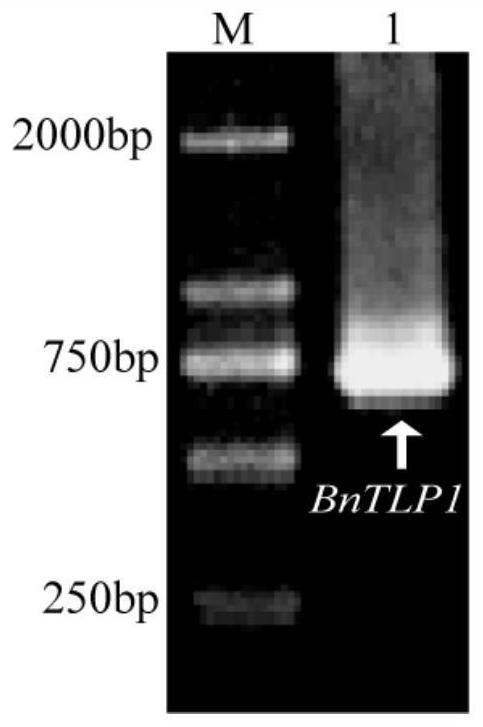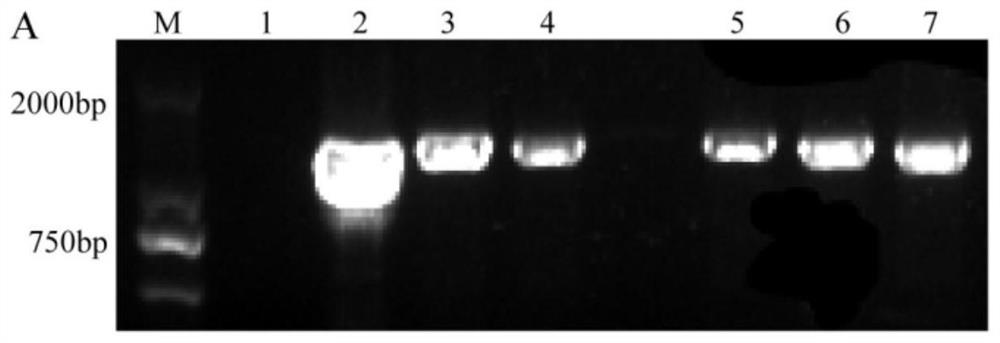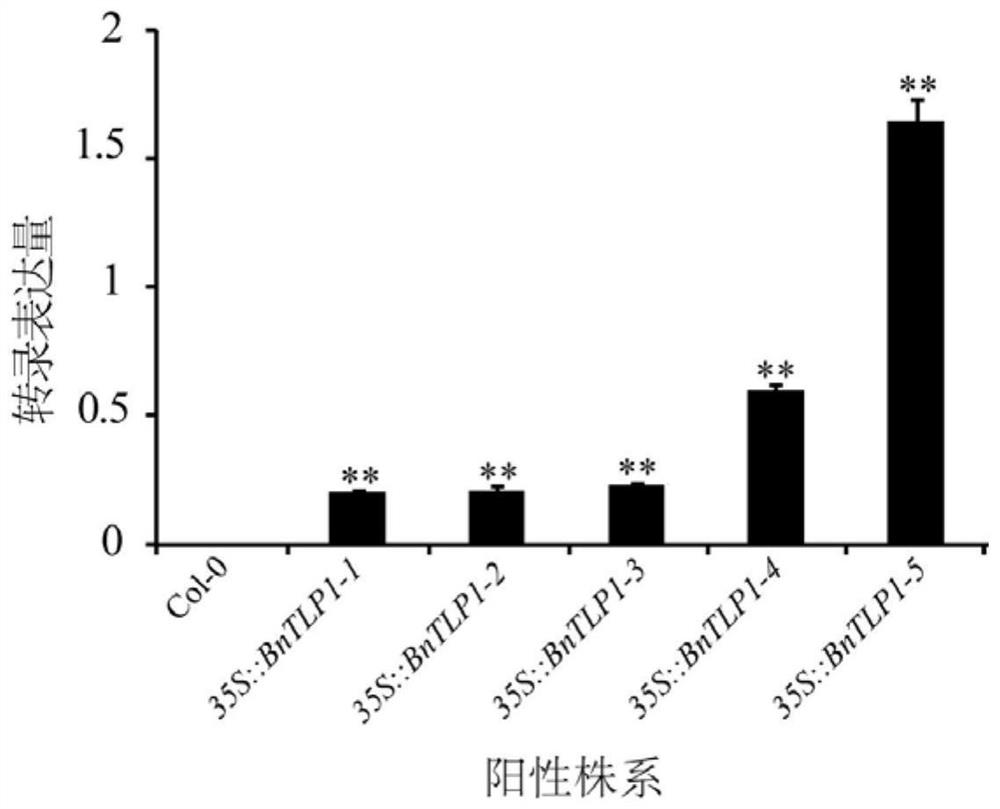The bntlp1 gene regulating the resistance to Sclerotinia sclerotiorum in Brassica napus and its application
A technology for cabbage rape and sclerotinia, applied in application, genetic engineering, plant genetic improvement and other directions, can solve the loss of rape yield and quality, the lack of understanding of genes and gene regulatory networks, and the lack of comprehensive and in-depth biological functions. Earth analysis and other issues to achieve the effect of improving resistance
- Summary
- Abstract
- Description
- Claims
- Application Information
AI Technical Summary
Problems solved by technology
Method used
Image
Examples
Embodiment 1
[0038] Example 1: TA cloning and sequencing of BnTLP1 gene
[0039] Take the young leaves of Brassica napus "Zhongshuang 11", extract total RNA with TriZol Reagent (Invitrogen, Item No. 15596026), use Nanodrop to detect the content and purity of total RNA, take 2.0 μg of total RNA for reverse transcription reaction, the adopted The reverse transcriptase is M-MLV (Promega company, product number M1701), and the steps of reverse transcription reaction refer to the instructions for use of the reverse transcriptase. Using the first-strand cDNA synthesized by reverse transcription reaction as a template, use primers:
[0040] 5'-ATGATTTATCAAAAAACACTTCTC-3';
[0041] 5'-TCACGGACAGAAAATGACAT-3';
[0042] Perform conventional PCR amplification; PCR reaction system is (20 μL): 1 μL cDNA, 2 μL 10×Buffer, 1.6 μL dNTP (2.5 mM), 1 μL each of forward / reverse primers (10 μM), 0.4 μL Taq enzyme (5 U / μL) and 13μL ddH 2 O (set up an 8-tube system to amplify the target gene in large quantiti...
Embodiment 2
[0043] Example 2: Construction of BnTLP1 gene overexpression vector
[0044] Using the BnTLP1 gene TA cloning plasmid of Example 1 as a template, the BnTLP1 gene was cloned with primers BnTLP1-F / R. The primers are as follows:
[0045] BnTLP1-F:
[0046] 5'-CCATCGATAGTACTGTCGACATGATTTATCAAAAAACACTTCTC-3';
[0047] BnTLP1-R:
[0048] 5'-TCCATCCCGGGAGCGGTACCCGGACAGAAAATGACAT-3';
[0049] The BnTLP1 gene was connected to the laboratory modified vector PGTV II-3FLAG by homologous recombination. The ligation system (20 μL): 12 μL of PGTV II-3FLAG linear vector, 1 μL of BnTLP1 purified product, 2 μL of enzyme (Exnase II), and 5 μL of 5×CE II Buffer . In this example, the PGTV II-3FLAG vector is used, and other vectors can also be used to construct the recombinant expression vector of BnTLP1. PCR to verify the size of the target gene fragment in the recombinant vector, such as figure 1 As shown, the lane "M" in the figure is the DL2000 DNA marker, and the lane "1" is the BnTLP1...
Embodiment 3
[0050] Example 3: Genetic transformation of the BnTLP1 gene
[0051]By alkaline lysis method, the DH5α recombinant strain plasmid of BnTLP1 gene was extracted and named 35S::BnTLP1. Transfect Agrobacterium GV3101 competent cells: add 10 μL of recombinant plasmids after freezing and thawing of competent cells, mix well, ice bath for 5 minutes; freeze in liquid nitrogen for 5 minutes; water bath in a constant temperature water bath at 37°C for 5 minutes; add fresh liquid LB medium without antibiotics , After mixing, activate for 2h at 28°C, 220rpm / min. Spread on LB plates containing kanamycin and rifampicin, cultivate in the dark for 2 days at 28°C, and use the BnTLP1-F / R primer in Example 2 to detect positive monoclonal clones. For the genetic transformation of wild-type Arabidopsis Col-0 by expansion culture in liquid LB medium with resistance to fulminant.
[0052] Agrobacterium-mediated genetic transformation method of wild-type Arabidopsis thaliana Col-0: amplify the cult...
PUM
 Login to View More
Login to View More Abstract
Description
Claims
Application Information
 Login to View More
Login to View More - R&D
- Intellectual Property
- Life Sciences
- Materials
- Tech Scout
- Unparalleled Data Quality
- Higher Quality Content
- 60% Fewer Hallucinations
Browse by: Latest US Patents, China's latest patents, Technical Efficacy Thesaurus, Application Domain, Technology Topic, Popular Technical Reports.
© 2025 PatSnap. All rights reserved.Legal|Privacy policy|Modern Slavery Act Transparency Statement|Sitemap|About US| Contact US: help@patsnap.com



